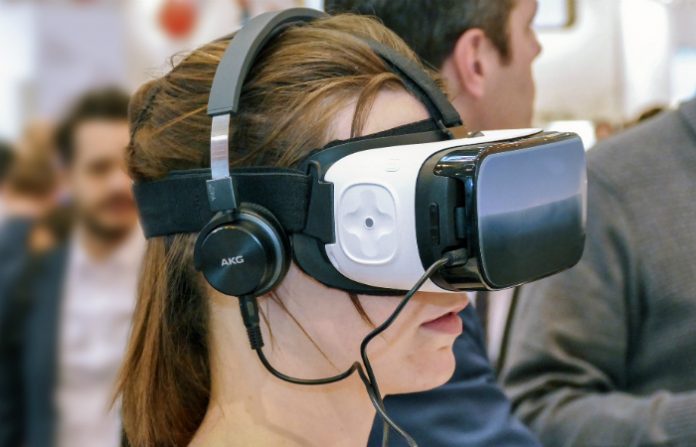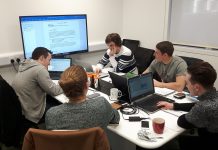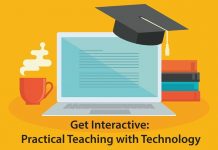Technology from tablets to virtual reality headsets can be used in a range of ways to enable great teaching and improve student outcomes. Jisc’s Sarah Davies offers her expert view on what helps technology-enhanced teaching make the grade.
A Jisc survey in 2016 of over 7,000 higher education students found that nearly three-quarters thought digital technology improved their learning when used effectively by teaching staff. Students told us they value 24/7 access to online content, slides and lecture notes, and want greater use of lecture capture and more consistent use of online services, including virtual learning environments, online activities and assessment submission.
In order to really make the most of technology to support learning, it needs to be ‘designed in’ as part of the overall pedagogic approach of the course: we need to rethink the way we teach and support students in the light of the possibilities offered by technology. Too often technology can still be viewed as an ‘add-on’ to traditional ways of teaching, without questioning whether some of those traditional methods are still the best ways of promoting learning in a digital age.
Whatever combination of approaches works for your subject, make sure that the assessments you set reinforce, rather than conflict with, your overall learning and teaching approaches.
How technology can best be used to support excellent teaching varies across disciplines and the type and level of courses, but I’ve pulled out four key features of excellent technology-enhanced teaching from the literature and from Jisc projects and case studies over the years.
Active learning using alternatives to the traditional lecture:
This might include learners researching topics online, using simulations and online tutorials, carrying out collaborative online assignments and interrogating datasets.
- In the flipped learning approach being used at Nottingham Trent University, students use self-study time to review content presented in a range of formats – including short videos, podcasts and readings – with face-to-face time used for collaborative small-group activities, often in specially-designed, technology-rich spaces, with the tutor acting as facilitator and guide.
- The availability of digitised primary sources such as rare early English books or parliamentary papers enables history and related disciplines to incorporate independent research activities which would not previously have been possible in many settings. History lecturers at Canterbury Christ Church University ask students to independently research a topic through online and other sources, and then use online forums and online debates to assess students’ skills in presenting an argument, using appropriate sources, and engaging with the views of others. Class time can then be used for a range of interactive workshops.
Frequent formative assessment and rapid feedback
Online tests are a classic example of this, and can be particularly effective in STEM (Science, Technology, Engineering and Mathematics) subjects and other curriculum areas for which meaningful multiple-choice questions can be designed. Clickers or other audience response systems can be used in class to enable immediate feedback, and can be used by lecturers to identify topics requiring further explanation. Online discussion groups and social media can be used to encourage learners to share their understanding and receive feedback.
- Feedback doesn’t need to come just from inside the university: comments from the outside world are also important. At the University of York, cultural heritage and archaeology students produce public blogs to develop new ideas, engage the public, and begin to shape their professional profile
Peer-to-peer learning and increased interaction among students
This might include group work and shared digital assignments in a range of formats, using collaborative online environments such as wikis for shared writing and using discussion groups as well as social media.
- The School of Business and Society at Glasgow Caledonian University uses a wiki-based process to enable students to research and answer international entrepreneurs’ current business questions collaboratively. This ‘challenge’ approach is also being used by second-year business studies students at Edge Hill University. Students on a project management module watch a pre-recorded lecture each week, spend an hour of face-to-face time discussing the content with the lecturer, and use the rest of their study time for the module working in two large self-organising groups on online projects that are of wider benefit, even racking up ‘billable hours’.
Monitoring student progress and intervening when necessary
This can be facilitated at the module level by many of the approaches above, which tend to make student learning and misconceptions more visible. At the course level, learning analytics is a key tool for monitoring progress across a large cohort of students in real time, identifying any students at risk of dropping out or under-achieving. Staff can then contact these students to discuss any issues and direct them to help and support. There is evidence from the UK, US and Australia that learning analytics can improve retention rates and raise attainment.
- At the University of New England in Australia, a pilot learning analytics project saw student attrition rates fall from 18 per cent to 12 per cent. A similar pilot at the UK’s Open University found that retention was increased by 2.1 per cent.
Putting it into practice: assessment
Whatever combination of approaches works for your subject, make sure that the assessments you set reinforce, rather than conflict with, your overall learning and teaching approaches and the ways you’re using technology. Many of the examples above illustrate how different types of assessed task are needed to drive more active and collaborative learning behaviours. What messages do the assessments you set send students about the knowledge-based, analytic and creative practices that are important to your discipline?
For more information on the areas covered in this blogpost, see HEPI’s paper on technology-enhanced education and Jisc’s guide to transforming assessment and feedback with technology. You can also access free online training via a MOOC created by the Bloomsbury Learning Environment.








